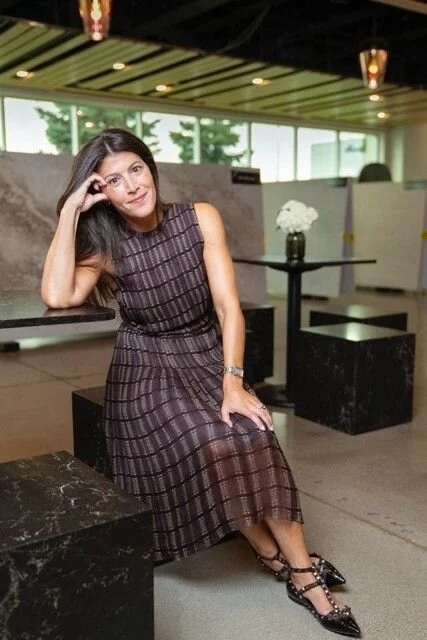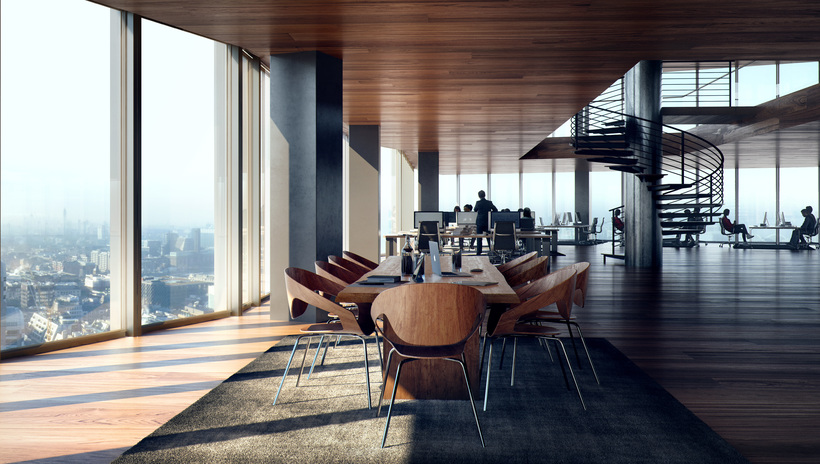If your office building is in need of a redesign, it's important to consult with an architect to see if renovations make more sense than restarting from the ground up. Often times, you'll find it's cheaper and wiser to build upon what already works.
The Latest Office Design Trends
The modern workplace is a constantly evolving space, and it’s one of the most important factors in the success of a business. The understanding of what design elements create a more productive and positive workplace is always developing, and in turn, influences the ways companies design their offices and spaces.
Office of the Future
Don’t wait to design a better performing workplace. With the cubicle farm a thing of the past, all the resources you need are available here and now.
WORKPLACE DESIGN TRENDS SUPPORT CREATIVITY
As demand grows for inventive solutions, companies and knowledge workers alike are increasingly prioritizing creative thinking. In this month’s news aggregate, we explore the rising importance of creativity at work and consider how this shift has affected today’s organizations.
Say Goodbye to Your Desk
At least, as you know it. Sensor-studded office desks and chairs will monitor your every move—and alert your boss when you no longer need a permanent workspace.
Dear Office Worker, The Future Is Free-Address
Workplaces are shifting from endless rows of cubes to a free-address work environment that allows you to work anywhere and everywhere. You are no longer tethered to an office or a cubicle. Why the shift? Most companies benefit from spontaneous collaboration—when you share information with colleagues on the fly and integrate as a team. The high-walled cubicle—your home-away-from-home—hinders this integration.
Accommodating a liquid workforce
The rise of the liquid workforce is transforming the way people work together, with demand soaring for freelance services and a growing pool of talent ready to supply it. Over the past five years, the number of contingent, “on-demand” workers has spiked, now comprising roughly 30 percent of the U.S. workforce. And yet, full-time talent recruitment and retention remain a vital part of the equation, considering clear benefits such as institutional knowledge and long-term employee engagement.
US experiences huge increase in telecommuting since 2005, claims study
FlexJobs and Global Workplace Analytics have published their 2017 State of Telecommuting in the US Employee Workforce report, which claims to be the most up-to-date and comprehensive data analysis available on the state of working from home in the United States. According to the study, the number of people telecommuting in the US increased by 115 percent between 2005 and 2015.
So Long Conference Room! How Microsoft Envisions the Future Office
If you take the door off the conference room, will the meeting be just as productive? That’s a question Microsoft, in collaboration with San Francisco–based Studio O+A, is hoping to answer. The two have partnered for the design of Microsoft’s Envisioning Center, an evolving space for testing prototypes at the tech company’s Redmond, Washington, headquarters. Unlike most testing facilities, however, the Envisioning Center isn’t a lab, but rather a fully designed environment where both in an active setting. In this case, that setting is the office of the very near future.
Up Close And Personal: The HX Workplace With JLL Global Head Of Research Dr. Marie Puybaraud
Organizations will need to re-think their workplace strategies and how they utilize their real estate. Some companies are starting to look at flexible workspace operators to help them better manage their portfolios. This is the case between IBM and WeWork.
Shared desks are less hygienic than dedicated workstations, claims study
A study by Initial Washroom Hygiene claims that microbiological activity is 18 percent higher in ‘hot desking’ environment. The firm claims that these findings suggest that having germs from different people on the surface of shared desks, computer mice and other equipment, means these workstations are typically home to more bacteria. The swabbing study was conducted using one company of over 100 employees with a fixed-desk environment. The same company then moved to a hot-desking environment, and the study was repeated in the same manner four months later.
My 400-Person Company Has A Great Work Culture, And We All Work Remotely
When we think of “culture,” so much of that is tied to a physical location. And that’s just as true of work cultures as urban ones. But here at Goodway Group, a digital marketing company with over 400 U.S.-based employees, we have a work culture that’s earned high marks on Glassdoor and kudos from Fortune‘s Great Place to Work initiative and the Society for Human Resource Management—and we all work from home. In fact, around a dozen of our team members live in RVs.
EXTEND THE WORKPLACE TO THE OUTDOORS
Research shows that working outdoors can increase creativity and productivity. Whether for socializing or quiet concentration, outdoor settings are prime destinations where we connect, collaborate and rejuvenate. They are the natural extension of great workplaces.
Peak Performance
A considered approach to office design could help employees become even more productive - so why are so many companies still getting it wrong? Organizations are realizing that they are fighting a war for talent. As that intensifies, employees are behaving more like customers, being choosy about who they work for and looking for organizations that convey particular values and culture through their workplace. What they’re looking for is more humanity in the office and environments that energize them and connect them with the organizations values – and one another.
Carlo Ratti reveals Office 3.0 workspace that promises to end "thermostat wars"
Italian architect Carlo Ratti has transformed a Turin building into an office space with a personalised "environmental bubble" for every worker.
Office 3.0 – first previewed in plans in the middle of last year – is the new headquarters for the Agnelli Foundation cultural institution in Turin, Italy.
ATTRIBUTES OF BUILDINGS OF THE FUTURE AND THEIR IMPACT ON WORKPLACE DESIGN
Buildings are by far the most permanent part of the workplace. With an average lifespan of about 80 years, many buildings outlive the occupants they serve.
Recent construction trends favor wild designs, featuring buildings that push the boundaries of engineering, market return and consumer popularity. Buildings are also redefining height limitations; at least eight of the world’s tallest buildings are planned to top out within the next five years.
How A Well Designed Meeting Room Can Foster Collaborative Learning
When planning an office design project, it is surprisingly common for businesses to neglect the design of their meeting rooms. After all, in a typical office building, meeting rooms are not in constant use and many facility managers take the approach that the room simply needs to be big enough to fit people in.
Half of UK employees say the workplace has a negative impact on their wellbeing
UK employers are falling short of fully supporting mental health in the workplace, with half of UK employees say their workplace has a negative impact on their physical, mental and financial wellbeing, a new survey claims. And according to the Global Employee Benefits Watch 2017/18 from Thomsons Online Benefits of over 2,000 office workers around the world, multinational organizations are not using benefits effectively to improve employee wellbeing and provide a positive workplace experience. Almost 40 percent of employees cite improving mental wellbeing as a life goal, yet less than half of those (18 percent), feel that their benefits scheme supports this. The situation is similar for those wanting to get fit and healthy; 44 percent of employees are keen to do this, yet less than half of them (20 percent) say their employer is helping them to fulfill this ambition.
WILL GENERATION Z ALTER THE DESIGN OF THE WORKPLACE?
International architects firm HKS conducted a yearlong research study to find out the future of the workspace. They based their research on Generation Z.We have all heard of Millennials, well for better or worse - their reign is coming to an end. So, let me introduce you to their replacements - Generation Z.
Your new office lightbulbs may be hacking your circadian rhythms
A new frontier for office space wellness—a technology that some believe will make employees more alert, productive, and healthier—is already on the market for consumers. Priced at $130, the Philips “Hue White Ambiance” starter kit contains two LED light bulbs and everything you need to tweak their brightness and color temperature via a smartphone.

























